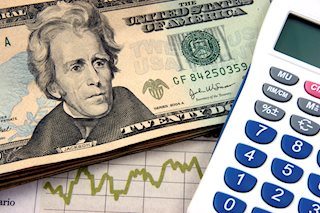US Dollar soft as market digest labor and economic activity data, Fed words
|
- US Dollar Index retreats to 106.50 and continues hitting a barrier near 107.00.
- Dollar weakens on Fed's Williams hinting at inflation cooling and rate reduction.
- Fed officials remain cautious amid persistent inflation concerns and uncertainty about future rate decisions.
- Mid-tier data from the US came in mixed on Thursday.
In Thursday's session, the US Dollar Index (DXY) flattens after Fed's Williams indicated a potential cooling of inflation and a subsequent decline in interest rates. On the data front, the data for Jobless Claims came in below expectations, while Manufacturing data raised concerns among investors. The DXY hovers around 106.50, indicating a possible move to find support for a rebound.
The DXY maintains an overall bullish momentum, supported by strong economic data and a less dovish Federal Reserve (Fed) stance. Its upward trajectory is driven by hawkish rhetoric, risk-off sentiment and geopolitical tensions. The uptrend is intact with limited expectations of aggressive Fed easing.
Daily digest market movers: US soft as markets digest Fed words, mixed data
- Fed's Williams hinted at potential inflation cooldown and interest rate reduction, leading to DXY's flattening.
- Jobless Claims data fell below expectations, while Manufacturing data raised investor concerns.
- Initial Jobless Claims for the week ending November 15 decreased to 213,000, below expectations.
- Continuing claims unexpectedly surged to 1.908 million, rising by 36,000 from the previous week.
- Philadelphia Fed Manufacturing Survey plummeted to -5.5 in November, slipping into contraction from positive territory.
- According to the CME FedWatch Tool, markets now assign a 55.5% probability of a 25 bps rate cut by the Fed in December, down from 70% a week ago.
- The US 10-year benchmark yield declined to 4.39%, moving further away from its recent high of 4.50%.
DXY technical outlook: Bulls face resistance near 107.00 as indicators show potential consolidation
Technical indicators, including the Relative Strength Index (RSI) and Moving Average Convergence Divergence (MACD), remain positive but have flattened, suggesting consolidation due to near overbought conditions. Index holds above its 20, 100 and 200-day Simple Moving Averages (SMA), and this should provide support to the bullish rhetoric. For the short-term, bulls must hold the 106.00 level.
Fed FAQs
Monetary policy in the US is shaped by the Federal Reserve (Fed). The Fed has two mandates: to achieve price stability and foster full employment. Its primary tool to achieve these goals is by adjusting interest rates. When prices are rising too quickly and inflation is above the Fed’s 2% target, it raises interest rates, increasing borrowing costs throughout the economy. This results in a stronger US Dollar (USD) as it makes the US a more attractive place for international investors to park their money. When inflation falls below 2% or the Unemployment Rate is too high, the Fed may lower interest rates to encourage borrowing, which weighs on the Greenback.
The Federal Reserve (Fed) holds eight policy meetings a year, where the Federal Open Market Committee (FOMC) assesses economic conditions and makes monetary policy decisions. The FOMC is attended by twelve Fed officials – the seven members of the Board of Governors, the president of the Federal Reserve Bank of New York, and four of the remaining eleven regional Reserve Bank presidents, who serve one-year terms on a rotating basis.
In extreme situations, the Federal Reserve may resort to a policy named Quantitative Easing (QE). QE is the process by which the Fed substantially increases the flow of credit in a stuck financial system. It is a non-standard policy measure used during crises or when inflation is extremely low. It was the Fed’s weapon of choice during the Great Financial Crisis in 2008. It involves the Fed printing more Dollars and using them to buy high grade bonds from financial institutions. QE usually weakens the US Dollar.
Quantitative tightening (QT) is the reverse process of QE, whereby the Federal Reserve stops buying bonds from financial institutions and does not reinvest the principal from the bonds it holds maturing, to purchase new bonds. It is usually positive for the value of the US Dollar.
Information on these pages contains forward-looking statements that involve risks and uncertainties. Markets and instruments profiled on this page are for informational purposes only and should not in any way come across as a recommendation to buy or sell in these assets. You should do your own thorough research before making any investment decisions. FXStreet does not in any way guarantee that this information is free from mistakes, errors, or material misstatements. It also does not guarantee that this information is of a timely nature. Investing in Open Markets involves a great deal of risk, including the loss of all or a portion of your investment, as well as emotional distress. All risks, losses and costs associated with investing, including total loss of principal, are your responsibility. The views and opinions expressed in this article are those of the authors and do not necessarily reflect the official policy or position of FXStreet nor its advertisers.